Le Prince de Beaumont's Beauty and the Beast is one of the most popular fairy tales of all time. It's very attractive to artists as well. It's interesting to note that Beauty (sometimes named Belle) never sparked as nearly as much inspiration as the Beast. Sure, they loved to portray her but it is always him who gets the most attention.
The Beast is an evasive character of mystery, melancholy, fear, charity, ... You name it. Everybody can find his or her personal truth in this immortal story which is much more than just another animal-groom tale. The Beast materializes our own system of values and worries, so everybody can see him differently. Everybody should see him differently.
This is why I decided to choose 10 illustrators with unique visions of the story, the Beast, and their perception of the audience.


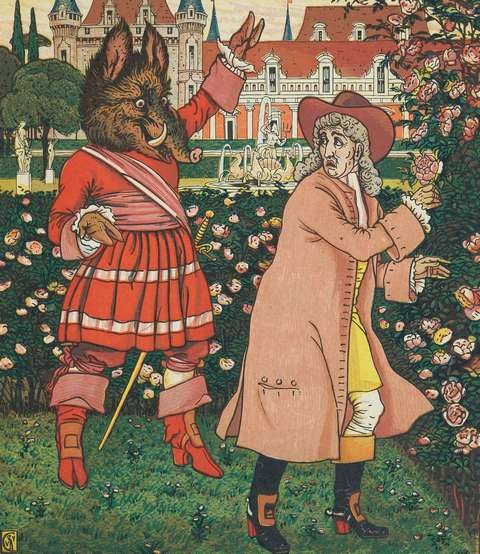
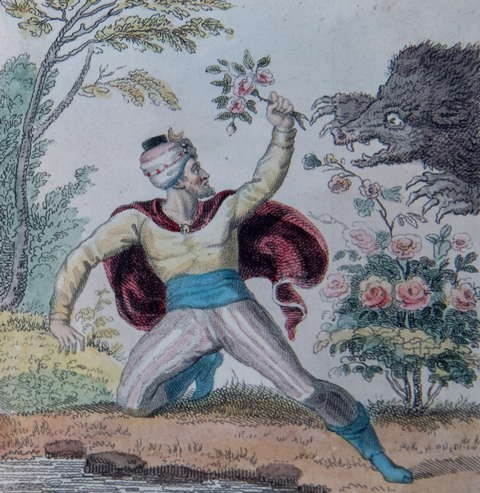
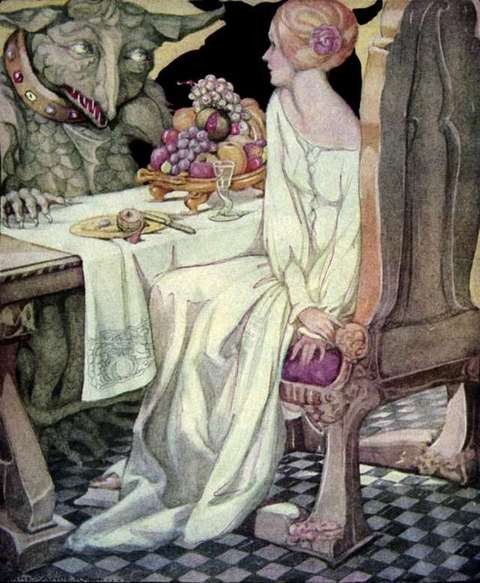
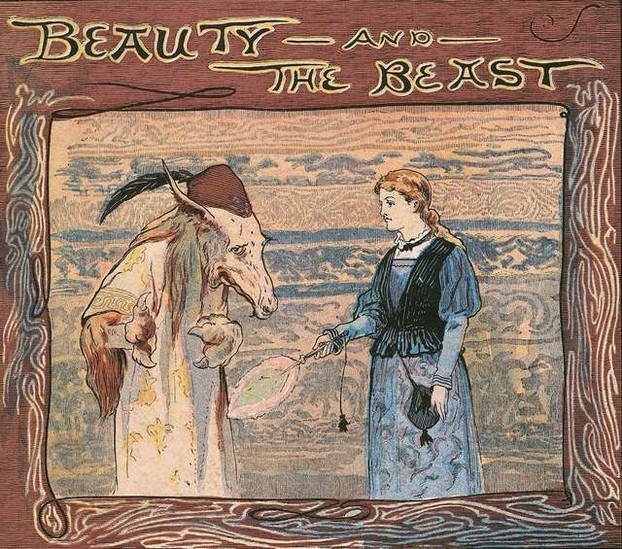
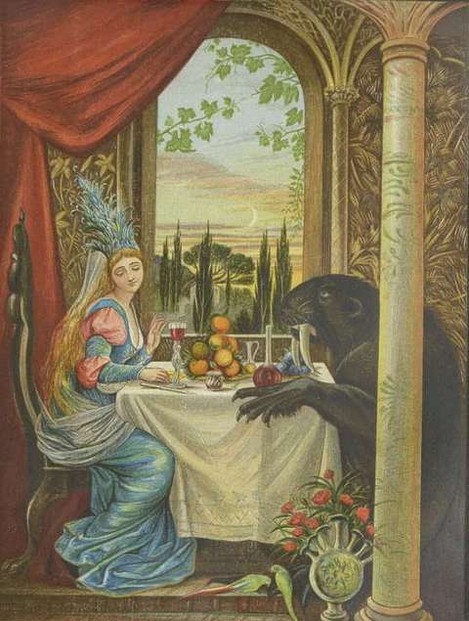
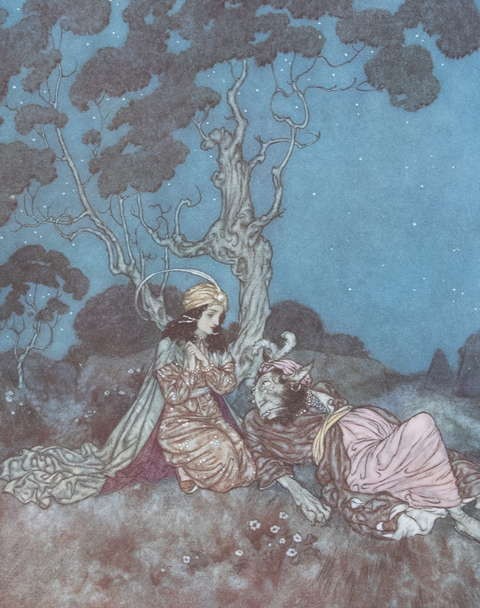
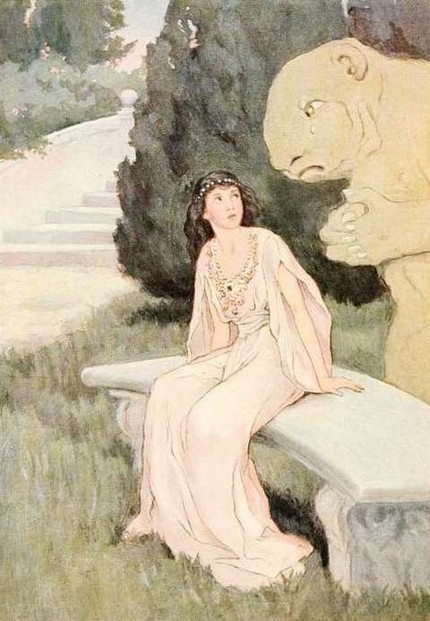
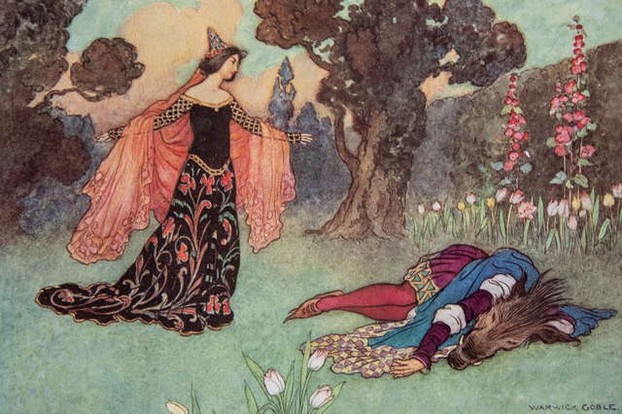
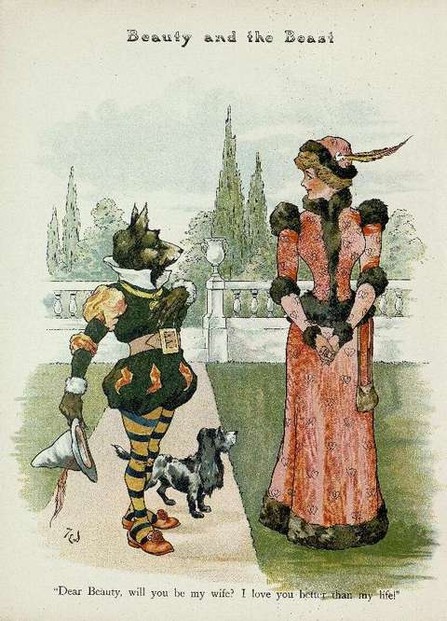
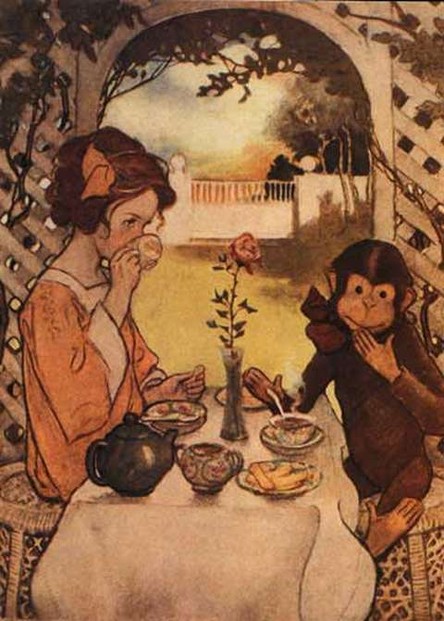
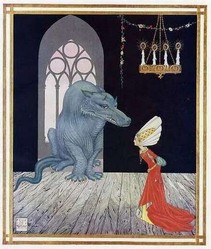

 Vintage Postcard Artists with 10 Examples of Easter Cardson 02/21/2025
Vintage Postcard Artists with 10 Examples of Easter Cardson 02/21/2025
 Valentine's Symbolson 01/23/2025
Valentine's Symbolson 01/23/2025
 Thanksgiving Symbolson 11/12/2024
Thanksgiving Symbolson 11/12/2024
 Famous Witches in Literary Historyon 10/06/2024
Famous Witches in Literary Historyon 10/06/2024
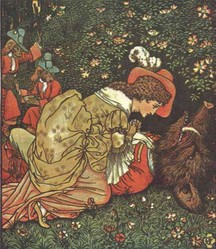
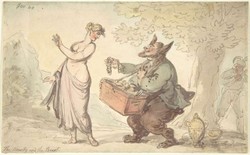
Do you find more interesting Beauty or the Beast?
Blue has many meanings (like all colors), in this case it fits out-of-this-world, heavenly, and melancholic feelings.
Madam Barbot de Villeneuve's version is much longer, with six brothers and six sisters. It was not written as an educational tool but more as a fairy tale, typical for the 17th century with numerous descriptions and decorative elements. Such fairy tales were primarily intended as the basics for plays in courts (with pauses, songs, etc.).
Beauty has a background, so fashionable dress can still fit. On the other hand, the story clearly states that the castle was loaded with dresses for nobility. So, in her case, everything goes.
Snow White is an example of riches-to-rags-to-riches, Hansel and Gretel is rags-to-riches. Yes, I am working on that.
Thank you for the VintageFairyTalePics link in the 10th subheading, about artist Jessie Willcox Smith.
The art work by Jessie Marion King (1875-1949) and the second, Beauty-alone image by Arthur Rackham (1867-1939) appeal to met.
That blue-dominant choice in both images attracts me.
What is the color symbolism of the respectively blue-surrounded and blue-dressed Beauty?
Thank you for the Top Illustrations by Top Artists link in your 10th subheading, for artist Jessie Willcox Smith.
The first paragraph in that link to Beauty and the Beast in pictures considers that "Let’s start with less known book written by Gabrielle-Suzanne Barbot de Villeneuve (169?-1755) who wrote the first version of The Beauty and the Beast. This is actually a novella for adults with basically the same plot we are all familiar with but also with many subplots which are today known only to devoted scholars."
What is an example of a subplot "today known only to devoted scholars"?
(Might including those subplots in the basic-known plot confusingly, tediously, unnecessarily complicate and lengthen that fairy-tale plot about second chances for the Beast and for the unsanctioned rose-picker?)
How the 10 artists dress Beauty intrigues me.
Gordon Browne and Jessie Wilcox Smith perhaps make Beauty respectively economically, practically dressed like for going to work and afternoon, non-evening, non-night dressed like for going to a daytime or pre-dinner evening event such as to morning or noon or Friday Mass (as opposed to Sunday Mass).
Anne Anderson, Eleanor Vere Boyle, Thomas Edward Donnison, Edmund Dulac, Warwick Goble and Katharine Pyle make Beauty dressed fashionably, stylishly like a lady with money and socioeconomic standing, might it not be your interpretation along with mine?
In such case, might those clothes be from the Beast castle wardrobes?
(Might you have seen Guy Ritchie's The man from UNCLE? Beauty in Beast castle wardrobe-chosen clothes reminds me of Armie Hammer as Illyra Kuryakin in his rich-man cover selecting clothes for Alicia Vikander as "chop-shop" girl Gaby Teller.)
Thank you!
It appears that fairy tales at first glance do not necessarily always have socioeconomically rags-to-riches heroines.
For example, Snow White has socioeconomically royal riches as a king's daughter even as she has emotional rags as the stepmother queen's unwanted inherited family member by marriage to Snow White's father.
Is a fairy-tale heroine generally either a king's or a merchant's daughter?
Might the respective fairy tales have matched Cinderella to a specific socioeconomic niche, such as a merchant father?
Where might Gretel stand as (was it) a hunter's daughter?
(It would be educationally entertaining, entertainingly educational for ;-D Tolovaj ;-D to write a wizzley about the socioeconomic niches of fairy-tale heroines and villainesses!)
Merchants were typical middle class. They were not mobility but not poor either. They could even provide good marrieages to poor nobility. But in this case, merchant lost everything, so this story has a structure riches-to-rags-to-riches, just like Cinderella.
I agree.